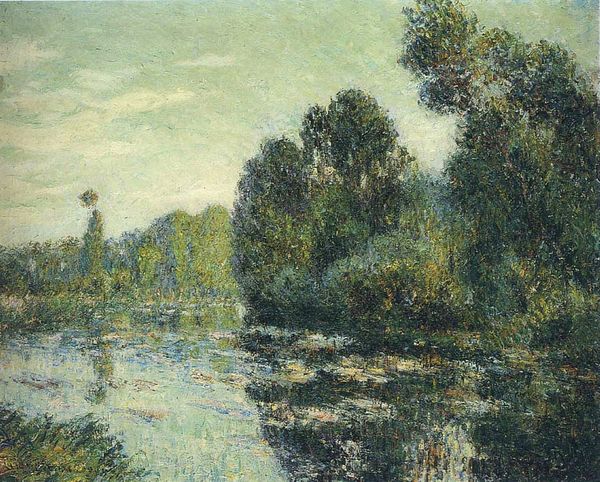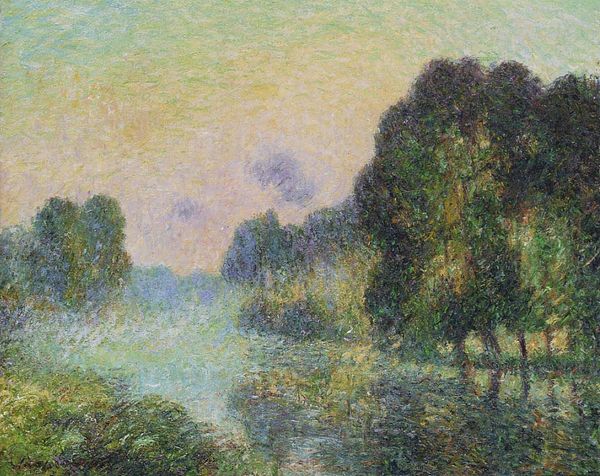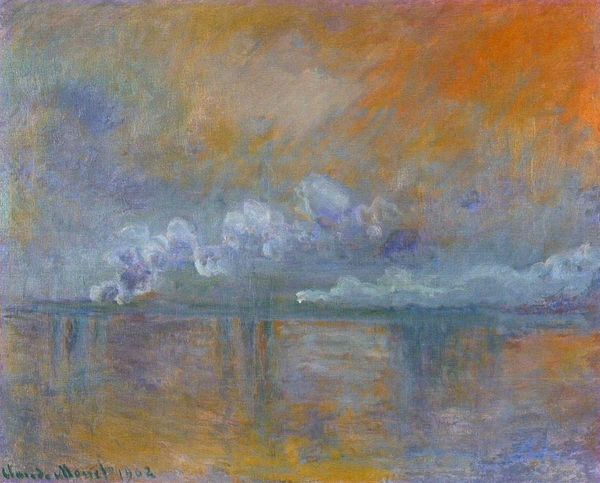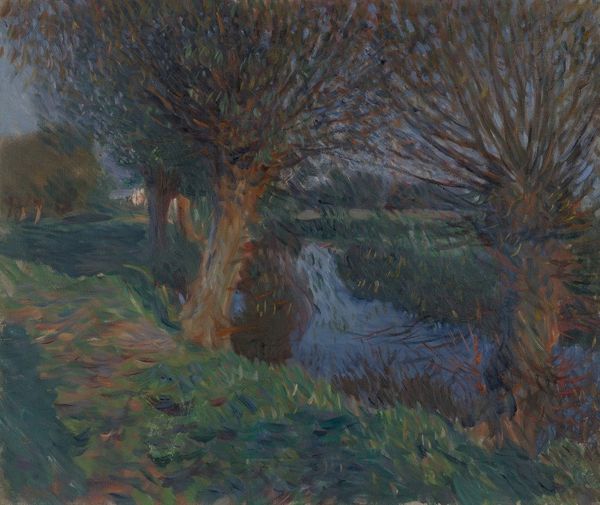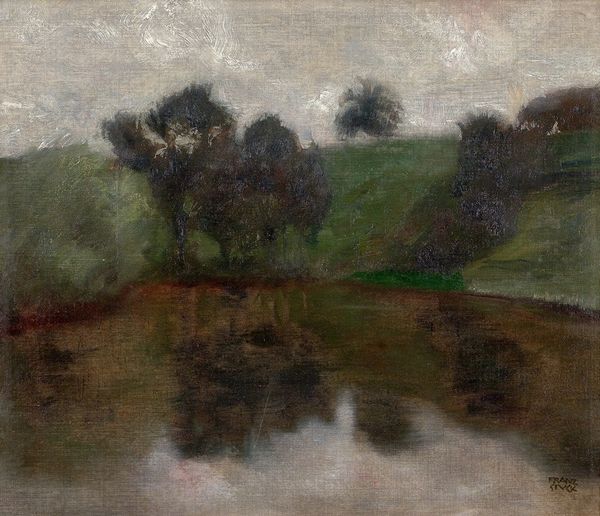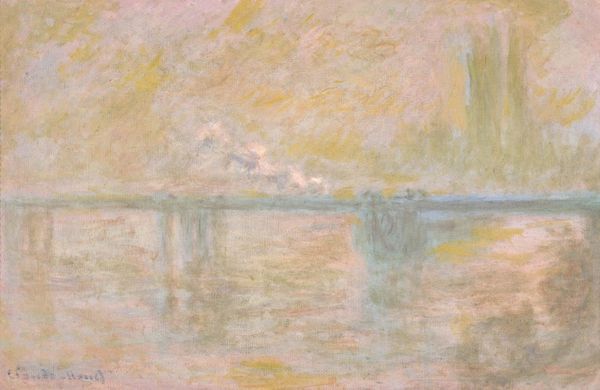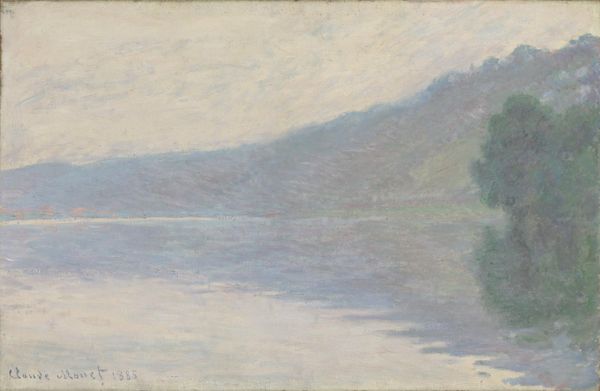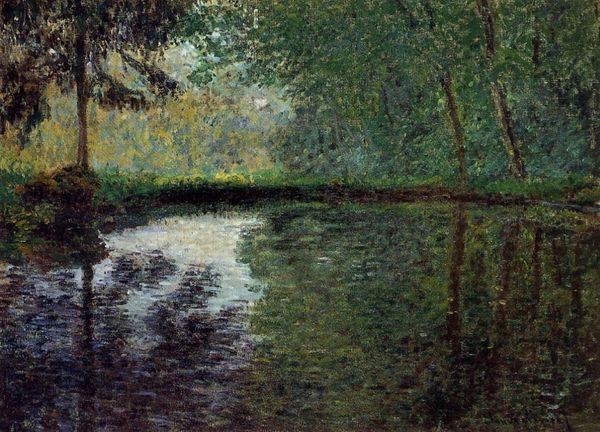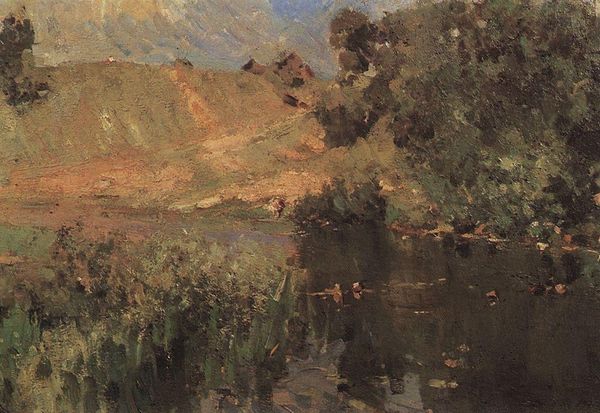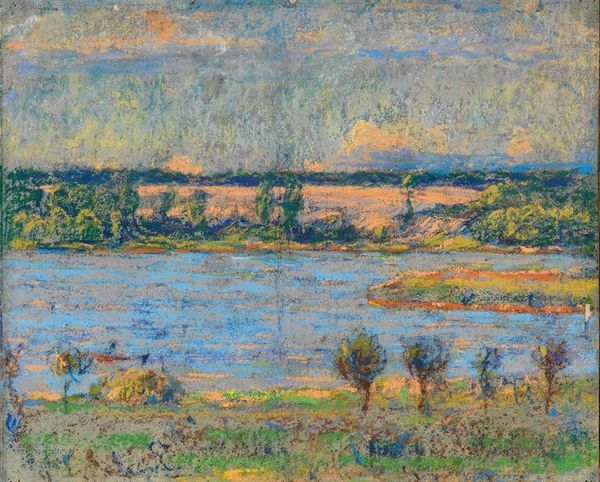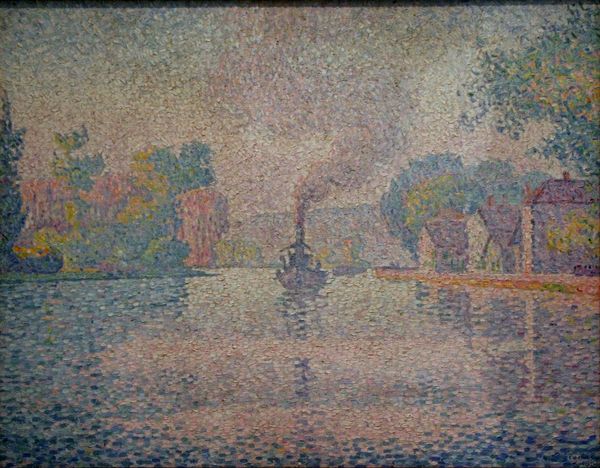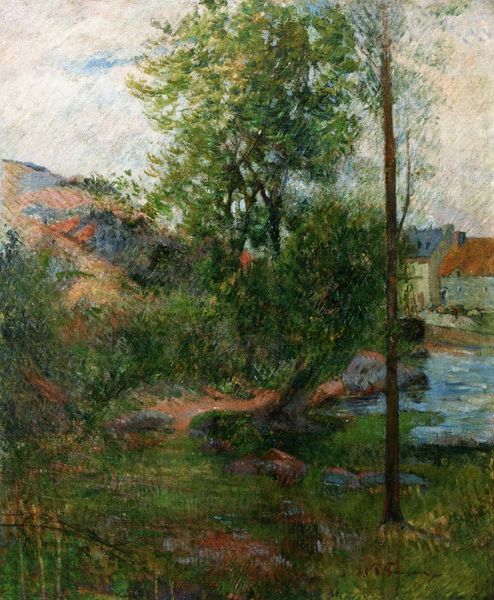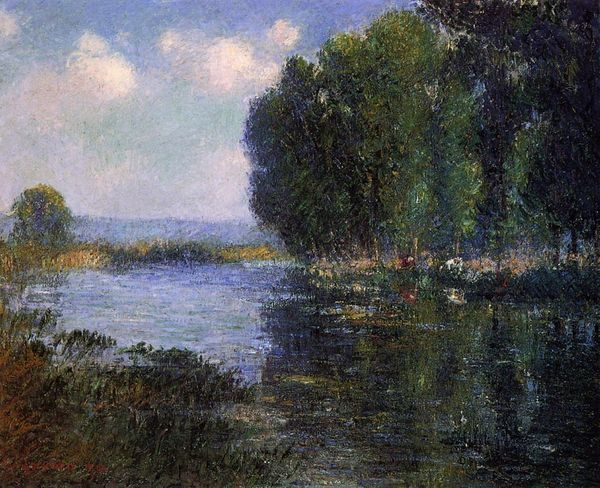
painting, plein-air, oil-paint
#
painting
#
impressionism
#
plein-air
#
oil-paint
#
landscape
#
river
#
impressionist landscape
#
figuration
#
romanticism
#
post-impressionism
Copyright: Public domain
Editor: Henri Martin’s painting, “Lavandiere on the Pond Bank,” presents a landscape with figures working by the water. The mood feels subdued, almost melancholic, with the soft colors and indistinct forms. What's your perspective on this scene? Curator: It's fascinating to view this through a historical lens, considering how late 19th-century French art often engaged with representing the working class. The figures, rendered almost anonymously, evoke a romanticized view of rural labor, consistent with the artistic preferences of the Post-Impressionists. Do you see that playing a role here? Editor: Yes, I do notice how their anonymity adds to the dream-like quality of the painting. But is there also a political aspect to portraying laborers in this way? Curator: Absolutely. During this period, representing laborers became a way to comment on the social landscape and the changing relationship between the urban and rural populations. The setting, painted en plein air, reflects Impressionistic techniques and their concern with fleeting moments and light. Consider how the display of labor, here the laundress or lavandiere, speaks to the socio-economic concerns of the late 1800s and the value society ascribes to certain work. Editor: So, the beauty is a carrier for bigger, social messages? Curator: Precisely. Martin provides an idealistic view of a traditional life threatened by the Industrial Revolution, a vision shared by the burgeoning art market and its patrons. What does the title bring to the narrative? Editor: “Lavandiere on the Pond Bank” makes me consider the ordinary tasks represented as significant— almost sacred. This conversation really opened up how art interacts with culture and societal changes. Curator: Indeed! Examining the political and social context reveals new layers of interpretation in such seemingly simple scenes. It goes to show how art mirrors the society it emerges from, influencing perception and ideals in turn.
Comments
No comments
Be the first to comment and join the conversation on the ultimate creative platform.
